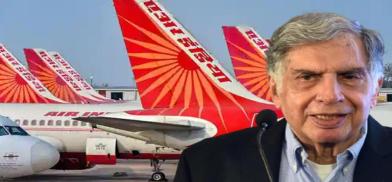Can Air India become world class again? Can Tatas live up to expectations?
What is the future of civil aviation and Air India? The immediate outlook is that it will take beyond 2022-23 to return to any semblance of pre-pandemic normalcy, writes N. Chandra Mohan for South Asia Monitor

The Tata Group has regained ownership of the national flagship carrier, Air India, after seven decades after it was nationalized. The government is, of course, relieved that it has successfully privatized the state-owned airline that was haemorrhaging with losses of Rs 200 million a day, incurring a huge debt of Rs 623.6 billion as of March 2020. The salt-to-software conglomerate acquired Air India for Rs 180 billion, of which 85 percent takes care of the carrier’s debt and a cash payment to the government of Rs 27 billion for the sale transaction. In his first statement, N Chandrasekaran, Chairman of Tata Sons, stated that the Group was “committed to making this a world-class airline”.
The Tatas are already a player in the civil aviation space in recent years, owning 84 percent of Air Asia India and 51 percent in Vistara in partnership with Singapore Airlines. Now with Air India, the Group has access to 117 wide-body and narrow-body aircraft and 24 narrow-body planes of Air India Express. Besides, it will get 4,400 domestic and 1,800 international landing
and parking slots, including ones at Heathrow in London and JFK airport in New York. The group thus can step up its international flights as Air India is the largest player on long haul routes like Europe and US.
Tatas at No 2
Domestically, the Tatas will now become the second-largest player behind Indigo. Air Asia India currently has a share of 6.9 percent while Vistara has 6.7 percent. Air India brings 10.3 percent, all of which adds up to a significant 23.9 percent, according to the latest numbers of the Directorate General of Civil Aviation. Of course, this lags behind Indigo’s substantial share of 54.3 percent but is double that of SpiceJet. Civil aviation thus belongs to the growing list of sectors like telecom, steel, cement, cars and
trucks, in which the top two players enjoy a commanding market share.
What are the challenges the group faces with this acquisition? The biggest one is turning around Air India in a high-cost environment. If the Tatas have the magic wand to make Air India a world-class airline (which it once was), what prevented them to do so for Air Asia India and Vistara? Why couldn’t Air Asia replicate its success in Malaysia and Thailand in India after it entered in 2014? Vistara’s fortunes were upended by Covid-19. But it bled with losses of Rs 18 billion in 2019-20 and Rs 25-30 billion in 2020-21.
Loss-making industry
However, Tatas’ experience is not exceptional. The state of the civil aviation industry is best described as being chronically ill. All the leading players are awash in red although domestic traffic has improved – reflected in higher passenger load factors -- with the easing of restrictions after successive waves of Covid-19. The losses of Indigo, SpiceJet and Air India were Rs 200 billion in 2021-22. Operating losses led to a 35 percent increase in debt (excluding lease liabilities) to Rs 540 billion from March 2020 to September 2021, according to ratings agency CRISIL.
This state of affairs stems from the aviation industry having no control over aviation turbine fuel which accounts for one-third of operating costs. ATF prices, which averaged Rs 44 a litre in 2020-21, surged to Rs 83 per litre in November 2021. While ATF prices declined 6-8 percent in December 2021 and January 2022, they still remain high. Moreover, when they lease aircraft, they pay rentals in US dollars while their revenues are in Indian rupees. A weaker rupee vis-a-vis the US dollar adversely impacts their costs. The option to pass on these costs through pricier fares is not on in a fiercely competitive domestic environment.
What is the future of civil aviation and Air India? The immediate outlook is that will take beyond 2022-23 for returning to any semblance of pre-pandemic normalcy. Although the domestic airlines carried 33 percent more passengers in 2021, this growth is on a low base and is not sustainable.
The future
A rule of thumb is that the natural growth of the aviation market is 1.5 times India’s GDP growth. Thus, with a realistic GDP growth rate of 6-7 percent in 2022-23 and beyond, the ideal growth of the market thus is 9-10.5 percent per annum. That is the scenario ahead for the industry.
Looking ahead, Vistara may be combined with Air India for international routes and Air India Express with Air Asia India to take on the low-cost domestic competition. Air India under the Tatas will be better managed with superior in-flight services and professionalism.
As T N Ninan points out in the Business Standard, even if it stays in the red, losses should reduce quickly. Interest burden, too, will come down as synergies between Air India, Vistara and Air Asia India will help improve seat occupancy.
(The writer is an economics and business commentator based in New Delhi. His views are personal. He may be contacted at nchandramohan@rediffmail.com)










Post a Comment